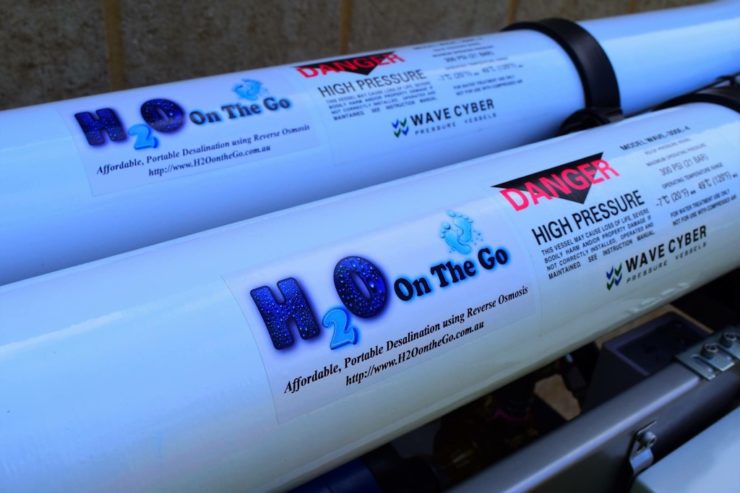Should I buy a reverse osmosis watermaker with one membrane or two?
When it comes to reverse osmosis (RO) watermakers, two membranes is generally better, this is because you make more water for the energy that you use.
This is how it works, for this example I will use a 1 horsepower (hp) RO watermaker. If you had this system and you have one membrane, you will be drawing 1 hp or 750 watts of electricity for every hour that the system is running. With this system you will make approximately 60 litres of water per hour.
If you add a second membrane to this same 1hp system you will make 100 litres per hour but still use the same 1 hp or 750 watts of power.
So how is this possible?
Reverse osmosis watermakers create quite a bit of waste, if you have one membrane 80% of the water you put into the system comes out as waste and 20% as potable water.
Adding a second membrane means that you actually have another go at creating potable water from the waste water from the first membrane. The waste is passed from the outlet of the first membrane straight into the inlet of the second membrane while still under pressure and this second membrane makes an additional 40 litres of portable water.
Why does the second membrane make less?
The second membrane only makes less if your using seawater, if you were using brackish or fresh water it would make almost the same amount as the first membrane.
The reason it makes less when using seawater is because the salt content of the waste water is higher than the salt content of seawater, this is because you have removed 20% of the water but have left the salt from this 20% behind, this means the salt content of the 80% waste has risen by 20%.
Seawater has a salinity of approximately 36000 parts per million of salt and other minerals, this means there is 36000 milligrams of dissolved minerals in every litre of water.
The waste water has an increased salinity closer to 70000 parts for million, as the salinity increases the membranes are unable to draw as much potable water for the hyper salty water, not only can the membrane make less water the salt content of the water increases.
A typical salt content or totally dissolved solids (TDS) reading for one membrane is <200ppm
A typical TDS reading from the second membrane is <500ppm
The combined potable water flow from both membranes is between 300 and 400ppm. Which by the way according to the World Health Organisation is absolutely perfect for optimal health especially cardiac health that relies so heavily on conductivity in our bodies to work well.
We measure the salinity of water using a TDS meter, this works by measuring the electrical current in the water, this electrical current is produced by minerals in the water, these include salt, calcium, magnesium and many others, all of these minerals are essential to human health.
So why not add a third membrane and make even more water for the same energy?
There are three reasons for not adding a third membrane, the first is because the waste coming from the second membrane is so high that adding a third membrane will firstly increase the TDS of the portable water above 500ppm, secondly the third membrane would make very little potable water because of the hyper salinity of the water entering the membrane, and lastly because the flow of water from the second membrane has become to low for the membrane to operate efficiently.
When a membrane is operated outside of it’s recommended operating parameters it will become prone to premature fouling. When it comes to reverse osmosis membranes, fouling is the enemy!


